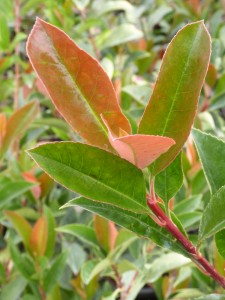March is for the birds
When it comes to choosing new plants for the garden, consumers often want to know the added benefits of each plant before they buy. It’s not good enough anymore that a plant is attractive; it also needs to serve a greater purpose. Planting for wildlife, such as birds, is becoming more important to home gardeners. March is a great time to plant for the birds.
When planting for the birds, often referred to as “birdscaping”, there is an important factor to consider: You’ll want to provide habitat and food throughout the year, not just during one season. Fall fruiting plants are often forgotten, with most consumers focused on spring and summer producing plants. Depending on your location, food sources in the garden may be dwindling come fall. Offering plants that provide fruit in fall is a good way to help home gardeners flesh out their birdscape.
When it comes to both beauty and function, pomegranates deliver in a big way. Fruiting pomegranates, such as ‘Wonderful’ are not only beautiful landscape bloomers, but also producers of loads of delectable fall fruit. Pomegranate fruits are full of sweet juice and seeds that are irresistible to many birds. Cardinals, finches, mockingbirds and quail are just a few of the birds attracted to pomegranate plants. Verdins are especially attracted to them. When fruits begin to ripen and split while still on the plants, birds will harvest the seeds.
Encourage customers to plant fall flowering plants that can help feed hummingbirds before and during their migration. A favored hummingbird magnet is cape honeysuckle. Its tubular bright red-orange blooms appear in fall; they persist through winter in very mild climates. The shape and color of the flowers make them and hummingbirds a perfect match. Cape honeysuckle can be grown and pruned into a shrub form or trained onto tall supports. It is a fast grower and can quickly cover fences or arbors.

